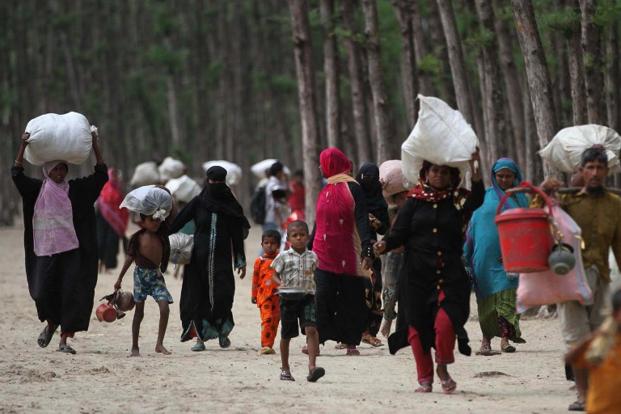A Brief Look at India’s track record on refugees
Chakma and Hajong tribals
- The Chakmas and the Hajongs were originally inhabitants of the Chittagong Hill Tracts of erstwhile East Pakistan (now Bangladesh) who were systematically forced out of that country.
- First, they were displaced from their original homesteads because of the Kaptai hydroelectric dam on the Karnaphuli river in the early 1960s, and there was no rehabilitation and compensation.
- Later, they became victims of religious persecution in East Pakistan, and fled to India.
- It is important to note that while the Chakmas are Buddhists, the Hajongs are Hindus.
- In the year 1947, the Chittagong Hill Tracts, which was a deeply forested, mountainous, area bordering Tripura, Mizoram and Myanmar, with a majority Buddhist population (about 97 per cent), was awarded to Pakistan.
- In 1962, the Pakistani government imposed further misery on the Chakma tribe by building the Kaptai dam.
- Approximately 40,000 Chakma tribals, who had lost their homes and farmland due to flooding, emigrated to India as refugees.
- India, facing its own war in 1962 on the north-eastern border, offered 2,902 Chakma refugee families resettlement in Arunachal Pradesh.
- It was only in the year 1996, with the Supreme Court pushing the State government to protect the Chakmas, did the harassment decline.
- It is also important to note that although all of them were treated as refugees originally, the Government of India decided to grant them citizenship under Section 5(i)(a) of the Citizenship Act on the basis of a joint statement by the PMs of India and Bangladesh in 1972.
- The State of Arunachal Pradesh, which came into being the same year, immediately opposed this, and continues to do so.
- The state has been repeatedly saying that it could not permit “outsiders” to settle on its territory because that would adversely affect its demography, and stretch its limited resources.
- Despite the opposition, however, about 1,500 Chakmas have their names in the state’s electoral rolls.
- Last year, 2017, the Centre decided it would grant citizenship to Chakma and Hajong refugees living in the Northeast while ensuring that the rights of indigenous people are not diluted.
- The issue had been discussed at a meeting convened by Union Home Minister Rajnath Singh and attended, among others, by Arunachal Pradesh Chief Minister Pema Khandu, Union minister Kiren Rijiju and National Security Adviser Ajit Doval. Rijiju, who hails from Arunachal Pradesh, said later that the Centre will urge the Supreme Court to modify its order granting citizenship to Chakma-Hajong refugees so that the rights of the indigenous people of Arunachal Pradesh are not diluted.
Other Refugees:
- Currently, India hosts over 2,00,000 refugees. These refugees are victims of civil strife and war in Tibet, Bangladesh, Sri Lanka, Pakistan, Afghanistan and Myanmar. Some refugees, the Tibetans who arrived between 1959 and 1962, were given adequate refuge in over 38 settlements, with all privileges provided to an Indian citizen excluding the right to vote).
Legal Framework for Refugees:
- From an Indian context, the Foreigners Act (1946) and the Registration of Foreigners Act (1939) currently govern the entry and exit of all refugees, treating them as foreigners without due consideration of their special circumstances.
- Refugees have been accorded constitutional protection by the judiciary. The National Human Rights Commission vs State of Arunachal Pradesh, 1996 case lends testimony to this.
- Honourable Supreme Court of India has held that the right to equality (Article 14) and right to life and personal liberty (Article 21) extends to refugees.
- However, it is also important to note that India remains the only significant democracy without legislation specifically for refugees.
- Critics have pointed out that a well-defined asylum law would establish a formal refuge granting process with suitable exclusions (war criminals, serious offenders, etc.) kept.
- It is also critical to note that India still remains a non-signatory to 1951 United Nations Refugee Convention and the 1967 Protocol, which help define the legal obligation of states to protect refugees.
